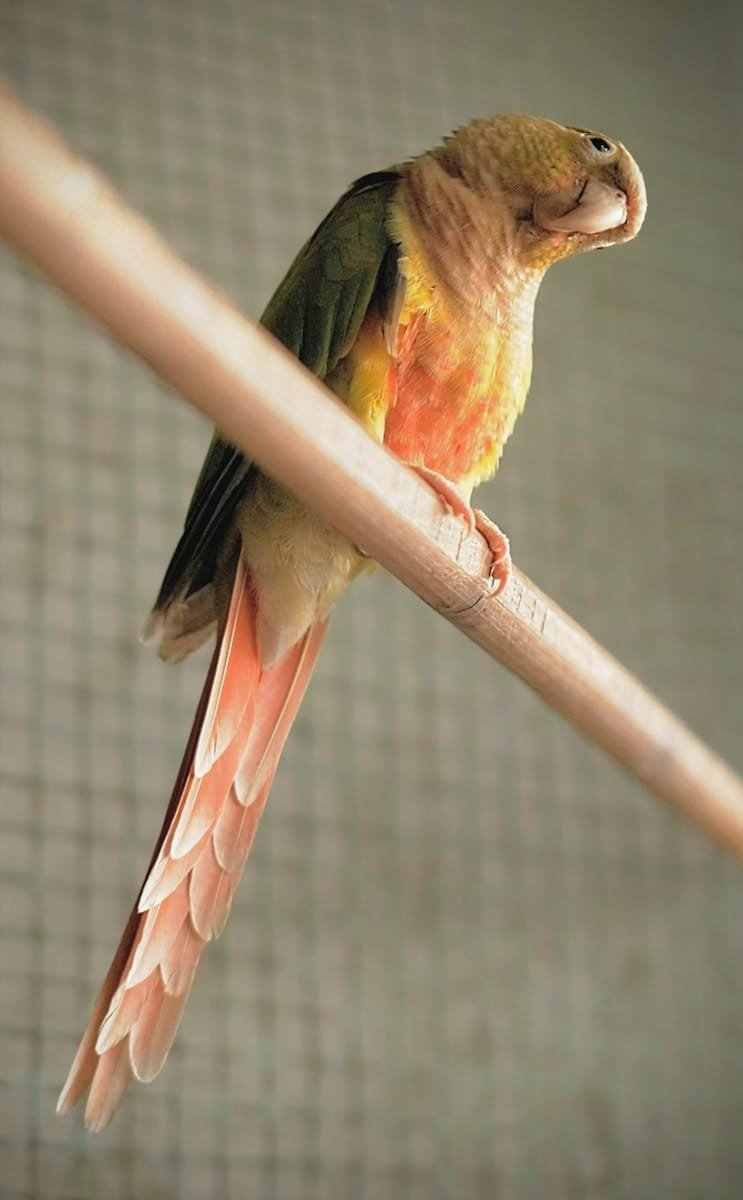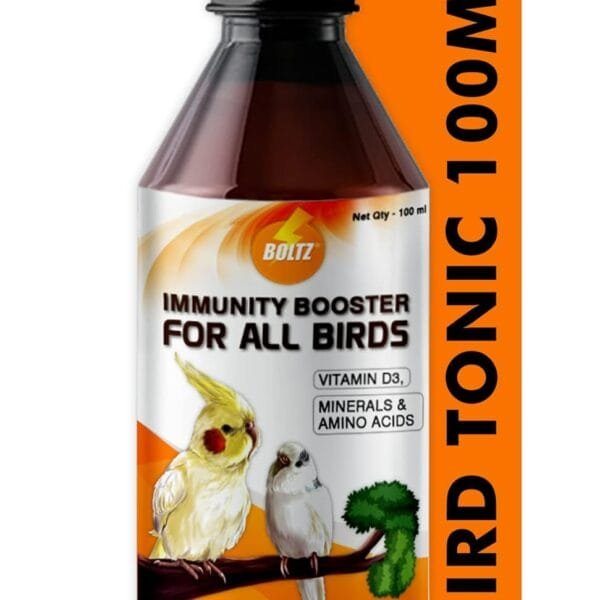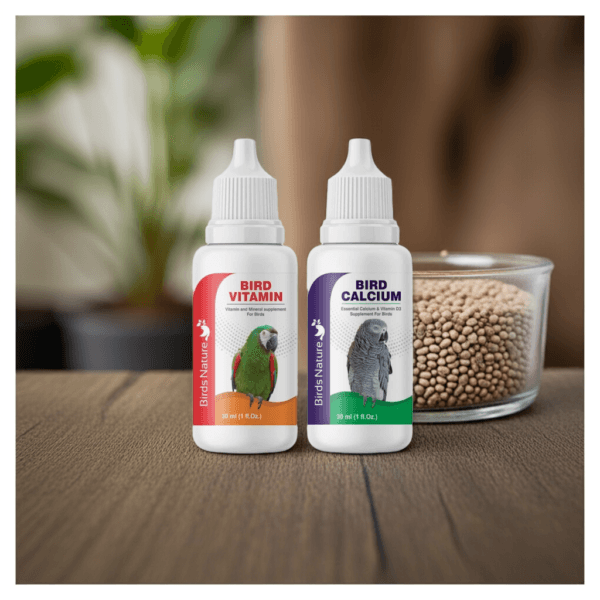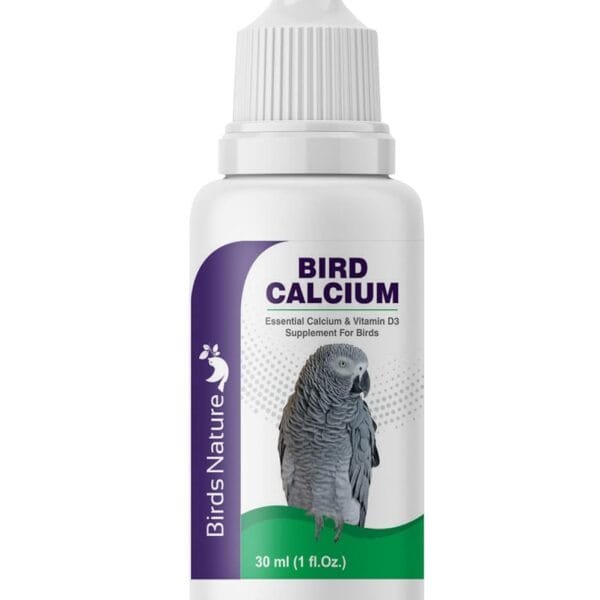Alexandrine Parakeet
The Alexandrine Parakeet (Psittacula eupatria) is a large, graceful parrot (58-62 cm) native to South Asia, named after Alexander the Great. Recognizable by its emerald-green plumage, maroon shoulder patch, and massive red beak, this species is quieter than other parrots but equally intelligent. They’re excellent mimics with a calm demeanor, though males can become territorial during breeding season. These active birds require spacious enclosures (minimum 5’W x 6’L x 7’H for aviaries) and daily flight time. With proper care including a varied diet and mental stimulation, they can live 25-40 years.
| ALEXANDRINE PARAKEET ESSENTIALS | |
|---|---|
| Origin | India, Sri Lanka, Southeast Asia |
| Size | 58-62 cm (23-25 in) – largest parakeet species |
| Weight | 200-300g |
| Lifespan | 25-40 years |
| PHYSICAL TRAITS | |
| Coloration | • Emerald green body • Maroon shoulder patch • Blue-grey cheek patches • Yellow-tipped tail (males) |
| Sex Differences | • Males: Black neck ring, pink nape band • Females: No neck ring |
| CARE REQUIREMENTS | |
| Diet | • 50% high-quality pellets • 30% vegetables (kale, corn, peas) • 15% fruits (apple, pomegranate) • 5% nuts/seeds (as treats) |
| Housing | • Minimum cage: 36″W × 48″D × 60″H • Aviary preferred (5’×6’×7′) • Natural wood perches (2-3″ diameter) |
| Enrichment | • Daily flight time (1-2 hours) • Foraging toys • Chewable wood blocks |
| BEHAVIOR | |
| Temperament | • Generally calm and gentle • Males territorial during breeding • Less noisy than other parrots |
| Talking Ability | • Good mimic (clear speech) • Typically learns 10-20 words/phrases |

Showing all 4 results
Showing all 4 results
🦜 Alexandrine Parakeet Care Guide
Complete care instructions for your majestic companion
🌞 Daily Care
- Diet: 1/4 cup pellets + 1/2 cup chopped veggies (kale, corn, peas) + 1 tbsp fruit
- Water: Change twice daily (they often dunk food)
- Exercise: Minimum 1 hour supervised out-of-cage flight time
- Mental Stimulation: Provide 2+ foraging toys rotated daily
📅 Weekly Care
- Cage Cleaning: Full disinfection of trays and perches
- Bathing: Offer spray shower or shallow bowl 3x/week
- Toy Rotation: Replace 50% of toys to prevent boredom
- Weight Check: Healthy range: 200-300g
| ALEXANDRINE PARAKEET DIET PLAN | ||
|---|---|---|
| Food Type | Percentage | Examples |
| Pellets | 50% | Harrisons, Zupreem Natural |
| Vegetables | 30% | Kale, sweet corn, bell peppers, peas |
| Fruits | 15% | Apple, pomegranate, berries (no seeds) |
| Nuts/Seeds | 5% (treats) | Almonds, sunflower seeds (unsalted) |
🏠 Housing Requirements
- Cage Size: Minimum 36″W × 48″D × 60″H (larger preferred)
- Perches: 3+ natural wood branches (1.5-3″ diameter)
- Toys: 5+ chewable wood toys rotated weekly
- Location: Avoid drafts/direct sunlight, place at eye level
❤️ Health Monitoring
- Weekly Checks: Weight, feathers, beak/nails, droppings
- Annual Vet Visit: Fecal tests, blood work
- Warning Signs:
- Fluffed feathers for extended periods
- Changes in droppings (color/consistency)
- Loss of appetite or weight
💡 Training & Behavior Tips
- Socialization: Require 2+ hours daily interaction
- Training: Use positive reinforcement (target training works well)
- Breeding Season: Males may become territorial (December-April)
- Noise Level: Moderate (quieter than other parrots)










